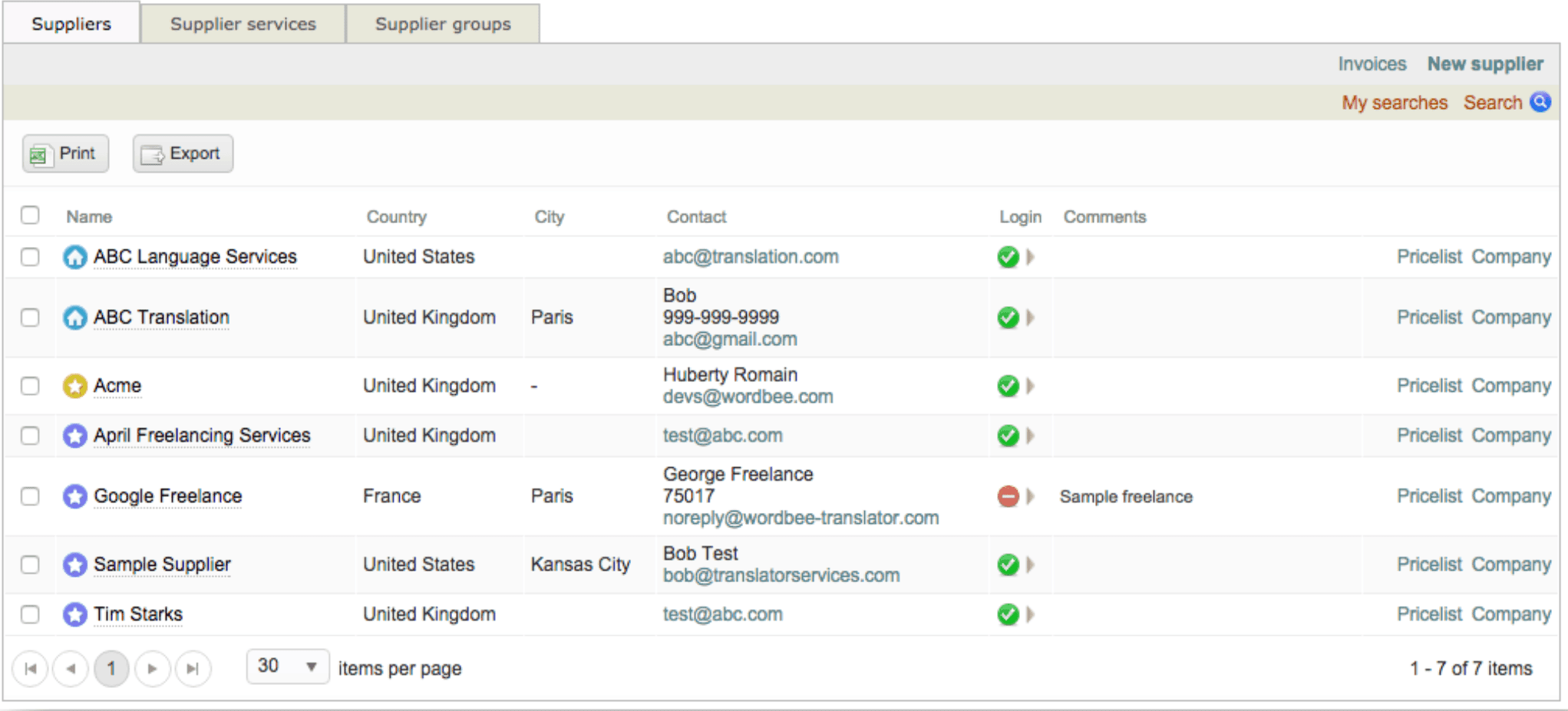A Data-driven Approach to Translation Vendor Management
Have you ever asked yourselves how a translation vendor differs from a vendor in other industries? Let’s tackle this question from two different perspectives.
Consider first the perspective of a company outside the translation industry: A company conducts procurement activities for both products and services as well as staff recruitment activities. The procedure for product and service procurement is different from the one for staff recruitment, but both respond to the same goal of finding the best resources to fulfill the company mission.
In the translation industry, on the other hand, these two procedures (procurement and recruitment) are somewhat confused and mixed together, because one of the fundamental issues in the translation community is whether a translation should be considered a product or a service.
A translation is a product from the point of view of a client who is only interested in the end result and doesn’t necessarily care to know how that end result is reached.
A translation is considered a service by a client who seeks a long-term partnership with his vendors. Translation might not be part of their core business, but it’s a crucial component nevertheless for achieving the corporate mission. In this specific instance, the client is interested in outsourcing a business function and, therefore, regards the translation vendor as an integral business unit.
A Data-Driven Strategy
The role of a translation vendor manager is defined by three essential activities:
- Searching for linguistic resources based on set criteria;
- Selecting and vetting them;
- Periodically maintaining the translator vendor database.
The common thread of these three activities is data, which is why business analytics should be a vendor manager’s best friend.
Follow the Data
Here we’ll give you few suggestions on how to develop a data-driven approach to your vendor management. But, as in the case of business analytics, once you’re well-acquainted with the basic data, you might want to develop your own analytics.
Searching for linguistic resources
Looking for linguistic resources should be a bidirectional activity. While a “Work with us” web can be a standing invitation to translators to register with your company, as a vendor manager you should also turn to various sources to find new resources. But before doing all this, take a look at the criteria set for the various projects on your dashboard: more frequent/less frequent language pairs, domains, services requested (post-editing, translation, transcreation, etc…).
Identify your company’s main clients and see if their requests are changing; for example, a new language combination (do you have enough linguistic resources in your database for that specific language pair?); or a new text typology; or, maybe there’s a change in the expected delivery times. The search should be proactive, so you’re ready to respond to any request that comes out of the blue.
Vetting and selection
Every six months you might want to get back in touch with the resources already in your database. Check if they have added a new language pair, a new service, or a new domain to their offering. Also, verify the most used translators. Why are they requested so often? Is it force of habit or is it because of their skills/services? Should John Doe really be the most requested translator from Turkish into English for texts on cosmetics, even if he is specialized in chemistry?
When vetting a new resource, you can of course request a short translation test from a translator. After all, because of the increasing competition, even professionals like dentists and lawyers offer one free consultation. And the fact that a translator is willing to do a free translation test can be a good sign. If you do want to go down this road, you’ll have to have a translation test package at hand and count on the availability various proofreaders — but all this could slow down your vetting process. So, consider this alternative: ask translators for references and — most importantly — for a portfolio with samples of their best work.
Vetting should also be conducted on a regular basis: every couple of months, go through the data report and identify the trends. Maybe a client has suddenly started to request translations from French into Greek and their projects are becoming more frequent. Do you have enough translators and proofreaders with this language pair in your database? Are they specialized enough for this specific client?
Database maintenance
It’s important to harness the power of data before unleashing it. Therefore, updating should also be a data-driven activity conducted every six months. The record of each linguistic resources should contain detailed information: Send an email (either personal or automated) to your resources asking them to check the information you have on them. They may want to add new samples of their work, new certifications, new services, and new fees. Check if there are linguistic resources who never reply and contact them directly. Finally, ask both clients and project managers to add a general or project-based rating of translator’s work.
For more information on vendor management in Wordbee, please refer to the Managing Suppliers section in Wordbee’s knowledge base.
Is this interesting?
Subscribe to get interesting localization podcasts, discussion panels, and articles every month.

















